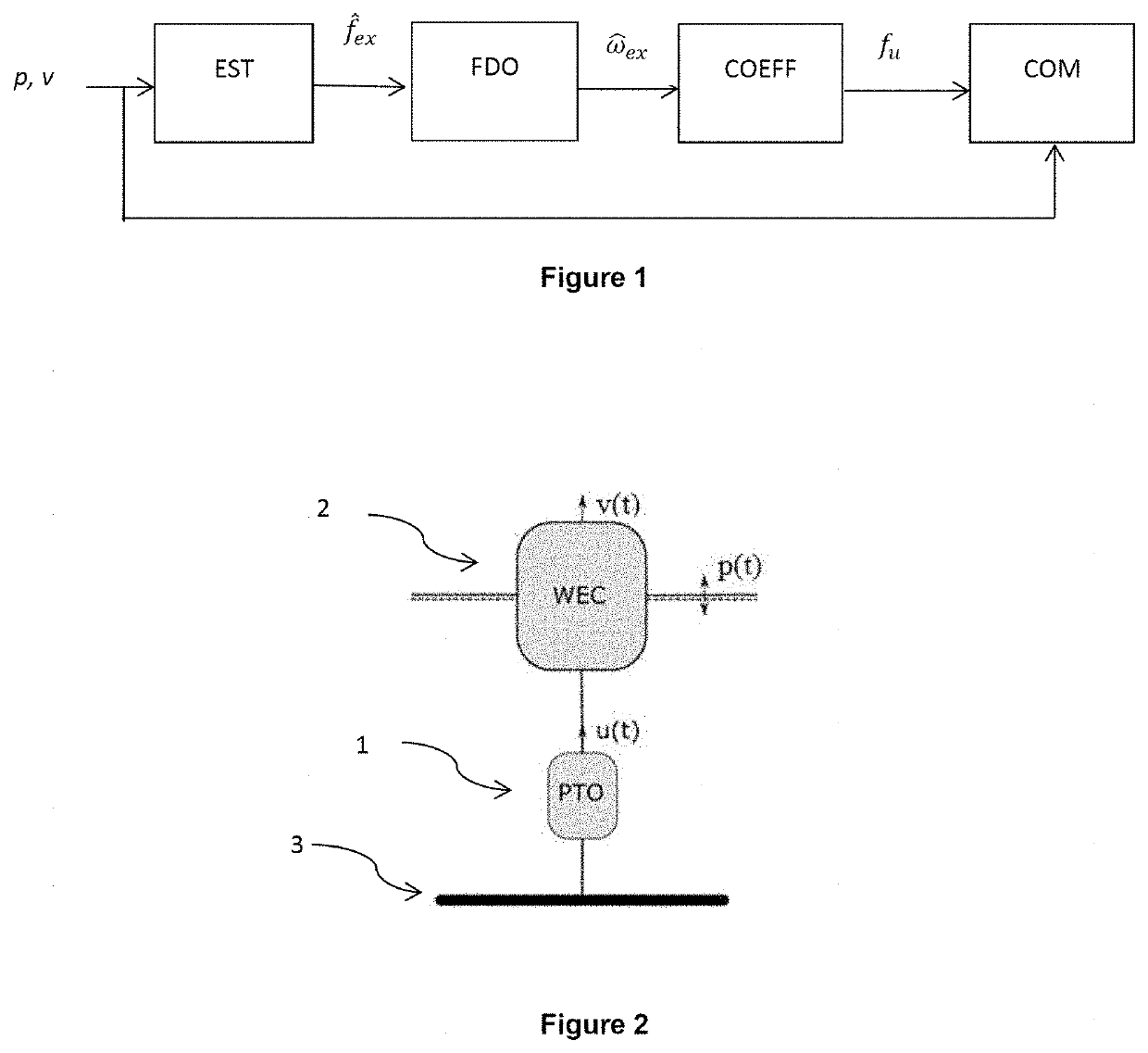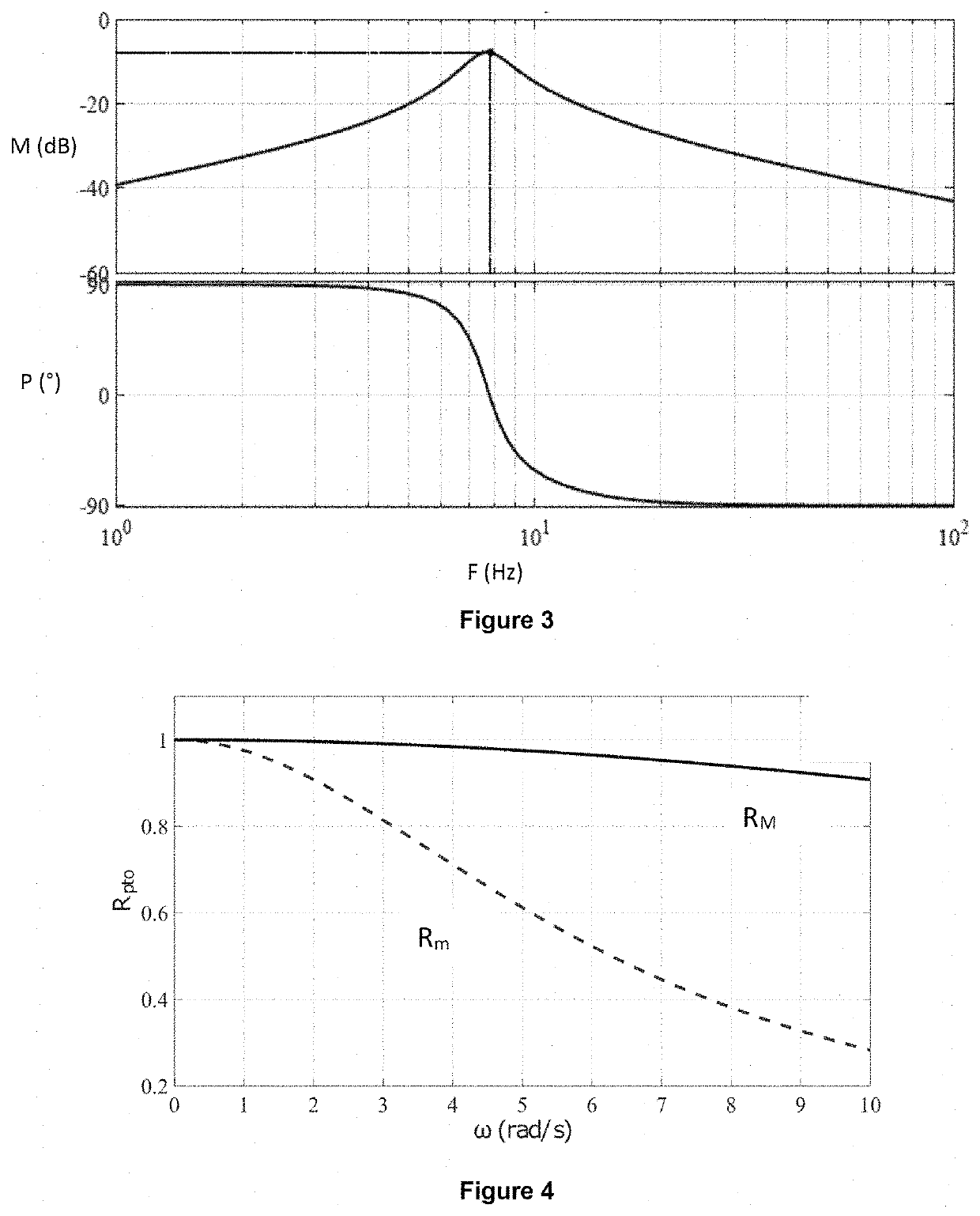Method for controlling a wave-energy-converter system taking into account uncertainties
a technology of wave energy conversion and uncertainty, applied in the direction of proportional integration algorithms, machines/engines, mechanical apparatus, etc., can solve the problems of insufficient optimal control of wave energy conversion system, inability to adapt to the gains, and insufficient power generation, so as to achieve the effect of maximizing the power generated by power take-o
- Summary
- Abstract
- Description
- Claims
- Application Information
AI Technical Summary
Benefits of technology
Problems solved by technology
Method used
Image
Examples
example of application
[0232]The features and advantages of the method according to the invention will become more clearly apparent on reading about the following example of application.
[0233]In this example, a float such as described in FIG. 2 is considered, the force-speed dynamics (speed response to the sum of the forces applied to the float) of which are given by the following transfer function:
Zi(s)=s6+208.6s5+8.583·104s4+8.899·106s3+1.074·108s2+7.031·108s1.44s7+300.4s6+1.237·105s5+1.284·107s4+1.652·108s3+2.106·109s⋀2+9.988·109s+6.539·1010
[0234]This function gives the Bode plot of FIG. 3. The top part of FIG. 3 is a curve of amplitude M in dB as a function of frequency F in Hz. The bottom part of FIG. 3 is a curve of phase shift P in ° (degrees) as a function of frequency F in Hz. It is a question of a typical Bode plot for a wave-energy-converter system of the type with a point-like absorber. The transfer function describes the dynamics of a small-scale (1:20) prototype to which the method has been ...
PUM
 Login to View More
Login to View More Abstract
Description
Claims
Application Information
 Login to View More
Login to View More - R&D
- Intellectual Property
- Life Sciences
- Materials
- Tech Scout
- Unparalleled Data Quality
- Higher Quality Content
- 60% Fewer Hallucinations
Browse by: Latest US Patents, China's latest patents, Technical Efficacy Thesaurus, Application Domain, Technology Topic, Popular Technical Reports.
© 2025 PatSnap. All rights reserved.Legal|Privacy policy|Modern Slavery Act Transparency Statement|Sitemap|About US| Contact US: help@patsnap.com



